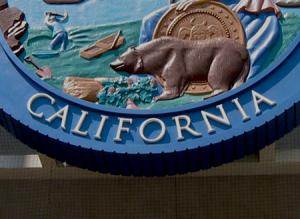California OKs Reductions in ROE

The California Public Utilities Commission has granted a petition by the state's major energy utilities to yet again extend the deadline for the utilities to submit their next cost-of capital proposals and to reduce their respective authorized rates of return on equity. In addition, the companies' costs of long-term debt and preferred stock will be reset for the 2018 test year.
The affected utilities are Pacific Gas & Electric Company (PG&E); San Diego Gas & Electric Company (SDG&E); Southern California Edison Company (SCE); and Southern California Gas Company (SoCalGas). Historically, rate of return on common equity (ROE) was set for each of the state's four largest energy utilities within the context of a general rate case for each respective company.
In 1990, however, the commission moved to review capital structure and ROE issues for all of the utilities at one time, although each utility was still expected to file its own separate cost-of-capital application. Such applications are filed only every three years. In the intervening years, the utilities' cost of capital is governed by an adjustment mechanism tied to an interest rate index. In explaining how that cost-of-capital mechanism works, the commission noted that the starting point is the most recently approved capital structure in conjunction with the cost of long-term debt and preferred stock for each company. Next, the commission said, it applies an index based on the average 12-month October through September period of Moody's A utility bonds (for utilities rated better than BBB+ and lower than AA-) and Moody's Baa utility bonds (for utilities with a credit rating of BBB+ or lower). Third, the commission stated, it develops a 100-basispoint deadband, and finally, it uses an adjustment ratio of 50%.
The commission related that it had last examined the utilities' costs of capital under the adjustment mechanism for test year 2013, but had authorized several extensions, with the most recent being to April 2017, for a 2018 test year. According to the commission, all of the utilities had suggested lower ROEs for 2018, as reflected in the following table:
| Current | 2018 Test Year | Total Reduction | |
|---|---|---|---|
| PG&E | 10.40% | 10.25% | 0.15% |
| SCE | 10.45% | 10.30% | 0.15% |
| SDG&E | 10.30% | 10.20% | 0.10% |
| SoCalGas | 10.10% | 10.05% | 0.05% |
In adopting the recommendations set forth above, the commission observed that all four utilities had based their proposed reductions in ROE in line with broad financial market trends. More particularly, the companies indicated that since their costs of capital had last been adopted by the commission in December of 2012, the financial markets have seen little volatility and have remained largely stable. As a result, the utilities asserted, market factors militated in favor of reduced ROEs, an assessment with which the commission agreed.
Turning to the companies' request to delay the next full review of the utilities' cost of capital, the commission remarked that the longer the deferral period, the more the risk increases that neither the authorized rate of return nor the capital structure will accurately show current financial market conditions. At the same time, though, the commission acknowledged that postponement could reduce immediate administrative costs.
In addition, the commission said, a delay also could aid in assuring that a comprehensive review of all costof- capital factors occurs at the end of the deferral period, so long as the intervening time is used to gather information. Consequently, the commission agreed that it would be reasonable to further extend the timeline by which the companies must submit their next cost-of-capital proposals.
The four utilities were thus instructed to file their next cost-ofcapital applications by March 22, 2018, for the 2019 test year. Re Southern California Edison Co. et al., Decision 17-07-005, Applications 12-04-015 et al., July 13, 2017 (Cal.P.U.C.).



